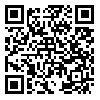BibTeX | RIS | EndNote | Medlars | ProCite | Reference Manager | RefWorks
Send citation to:
URL: http://rehabilitationj.uswr.ac.ir/article-1-291-en.html
Objective: Considering the fact that children with Down Syndrome have a severe delay in language development which does not appear being improved by language therapy leaning on auditory modality, this research was aimed to compare the traditional educational method and reading method effects on receptive and expressive language of 4 – 10 years old Down Syndrome children with 40 – 60 I.Q scores.
Materials & Methods: In this quasi experimental and interventional research from Navide Asr Rehabilitation clinic in Tehran, Rezvan Rehabilitation clinic in Shahriar, Ehsan Rehabilitation clinic in Karaj and Down Syndrome Association of Karaj, 20 Down Syndrome children were selected by simple and convenient sampling from 96 Down Syndrome children and were allocated into two groups by balanced randomized method. The first group was educated by whole word reading method and the other group was educated by traditional method. Both groups had three 15-minute educational sessions per week for a period of 6-month. Languages of both groups have been examined by TOLD- P: 3 test as pre and post-test. The results were analyzed by statistical tests including Kolmogoroff - Smironoff (K-S), Independent-T-Test and Paired-T-Test.
Results: Independent-T-Test in both groups revealed no significant differences before education in receptive (P=0.452), expressive (P=0.1) and speech (P=0.428) Language, but after intervention period, the groups have significant statistical differences in all language portions such as receptive (P=0.043), expressive (P<0.001) and Speech (P<0.001).
Conclusion: Reading education has more effects on receptive and expressive language in children with Down syndrome than the other educational methods (traditional ones). Thus it seems that focusing on behavioral and cognitive phenotype of Down syndrome with emphasis on visual modality facilitates language development more than auditory modality, and aptitude training may have the best effects.
Received: 19/05/2009 | Accepted: 12/10/2015 | Published: 12/10/2015
| Rights and permissions | |
 |
This work is licensed under a Creative Commons Attribution-NonCommercial 4.0 International License. |





